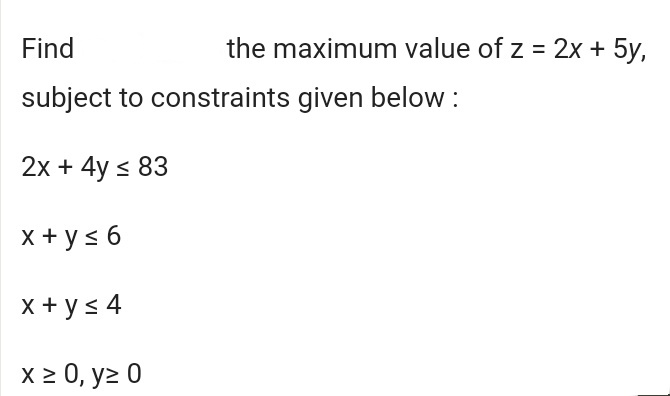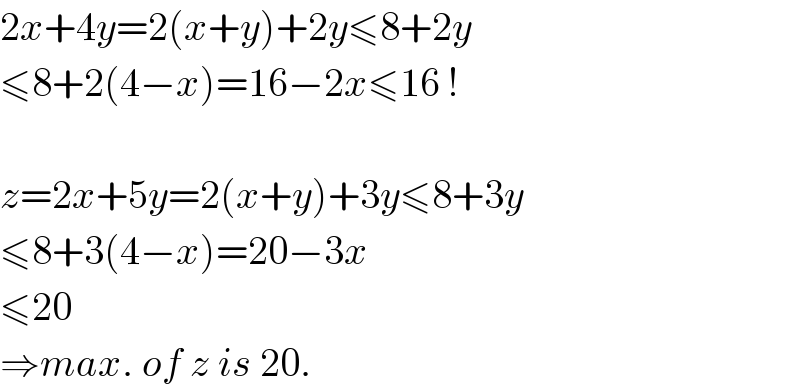Question Number 60256 by rahul 19 last updated on 19/May/19

Answered by mr W last updated on 19/May/19

$$\mathrm{2}{x}+\mathrm{4}{y}=\mathrm{2}\left({x}+{y}\right)+\mathrm{2}{y}\leqslant\mathrm{8}+\mathrm{2}{y} \\ $$$$\leqslant\mathrm{8}+\mathrm{2}\left(\mathrm{4}−{x}\right)=\mathrm{16}−\mathrm{2}{x}\leqslant\mathrm{16}\:! \\ $$$$ \\ $$$${z}=\mathrm{2}{x}+\mathrm{5}{y}=\mathrm{2}\left({x}+{y}\right)+\mathrm{3}{y}\leqslant\mathrm{8}+\mathrm{3}{y} \\ $$$$\leqslant\mathrm{8}+\mathrm{3}\left(\mathrm{4}−{x}\right)=\mathrm{20}−\mathrm{3}{x} \\ $$$$\leqslant\mathrm{20} \\ $$$$\Rightarrow{max}.\:{of}\:{z}\:{is}\:\mathrm{20}. \\ $$
Commented by rahul 19 last updated on 20/May/19

$${thanks}\:{sir}. \\ $$
